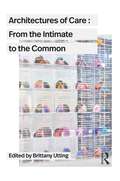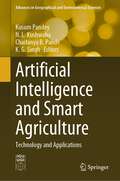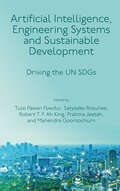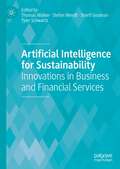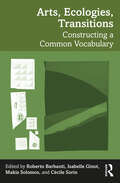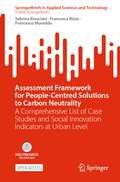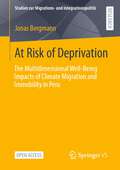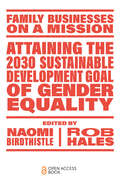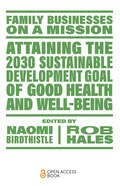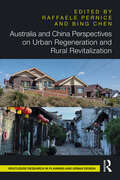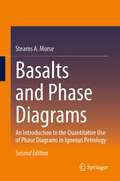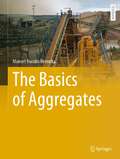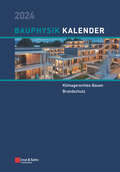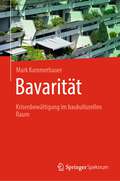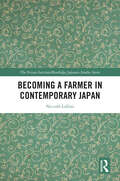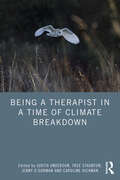- Table View
- List View
Architectures of Care: From the Intimate to the Common
Drawing from a diverse range of interdisciplinary voices, this book explores how spaces of care shape our affective, material, and social forms, from the most intimate scale of the body to our planetary commons.Typical definitions of care center around the maintenance of a livable life, encompassing everything from shelter and welfare to health and safety. Architecture plays a fundamental role in these definitions, inscribed in institutional archetypes such as the home, the hospital, the school, and the nursery. However, these spaces often structure modes of care that prescribe gender roles, bodily norms, and labor practices. How can architecture instead engage with an expanded definition of care that questions such roles and norms, producing more hybrid entanglements between our bodies, our collective lives, and our environments? Chapters in this book explore issues ranging from disabled domesticities and nursing, unbuilding whiteness in the built environment, practices and pedagogies of environmental care, and the solidarity networks within ‘The Cloud’. Case studies include Floating University Berlin, commoning initiatives by the Black Panther party, and hospitals for the United Mine Workers of America, among many other sites and scales of care.Exploring architecture through the lenses of gender studies, labor theory, environmental justice, and the medical humanities, this book will engage students and academics from a wide range of disciplines.
Architectures of Care: From the Intimate to the Common
by Brittany UttingDrawing from a diverse range of interdisciplinary voices, this book explores how spaces of care shape our affective, material, and social forms, from the most intimate scale of the body to our planetary commons.Typical definitions of care center around the maintenance of a livable life, encompassing everything from shelter and welfare to health and safety. Architecture plays a fundamental role in these definitions, inscribed in institutional archetypes such as the home, the hospital, the school, and the nursery. However, these spaces often structure modes of care that prescribe gender roles, bodily norms, and labor practices. How can architecture instead engage with an expanded definition of care that questions such roles and norms, producing more hybrid entanglements between our bodies, our collective lives, and our environments? Chapters in this book explore issues ranging from disabled domesticities and nursing, unbuilding whiteness in the built environment, practices and pedagogies of environmental care, and the solidarity networks within ‘The Cloud’. Case studies include Floating University Berlin, commoning initiatives by the Black Panther party, and hospitals for the United Mine Workers of America, among many other sites and scales of care.Exploring architecture through the lenses of gender studies, labor theory, environmental justice, and the medical humanities, this book will engage students and academics from a wide range of disciplines.
Artificial Intelligence and Smart Agriculture: Technology and Applications (Advances in Geographical and Environmental Sciences)
by Kusum Pandey N. L. Kushwaha Chaitanya B. Pande K. G. SinghAs technology continues to saturate modern society, agriculture has started to adopt digital computing and data-driven innovations. This emergence of “smart” farming has led to various advancements in the field, including autonomous equipment and the collection of climate, livestock, and plant data. As connectivity and data management continue to revolutionize the farming industry, empirical research is required to understand these technological developments. This book explores the applications of various artificial intelligence techniques by identifying and describing technical, functional, and non-functional future technologies for smart farming and agriculture. The book also presents practical application opportunities for the resolution of real-world problems, including contributions from precision irrigation, greenhouse data, livestock monitoring, automation, IoT ecosystems for agriculture, cloud computing, mobile robots for precision agriculture, remote sensing applications, anddata mining. In addition, this book provides summary information about different soilless techniques such as hydroponics, aeroponics, and aquaponics, among others. This book is ideally designed for farmers, agriculturalists, product managers, farm holders, manufacturers, equipment suppliers, industrialists, governmental professionals, researchers, academicians, and students seeking current research on technological applications within agriculture and farming.
Artificial Intelligence, Engineering Systems and Sustainable Development: Driving the UN SDGs
by Tulsi Pawan Fowdur, Satyadev Rosunee, Robert T. F. Ah King, Pratima Jeetah and Mahendra GooroochurnDevelopment in any country is impossible if reliable and affordable energy, safe water and sanitation, as well as telecommunication facilities, are not easily accessible. Artificial intelligence and machine learning techniques are now widely used in all branches of engineering to build and optimize systems. The combination of AI and engineering can indeed act as a real catalyst to achieve the UN SDGs. The volume editors present an analysis of different concepts and case studies in engineering disciplines such as chemical, civil, electrical, telecommunications and mechanical engineering, demonstrating how engineering systems and processes can leverage the power of AI to drive and achieve the UN SDGs. Topics covered include sustainable crop production and consumption, AI based clean water and sanitation monitoring, intelligent transport systems and achieving affordable and clean energy through AI and 5G powered internet of energy. Such a study is of paramount importance and is a valuable source of information for researchers, engineers, and policy makers to be able to better design and adopt AI enabled techniques in different engineering areas, with a view to catalyze the achievement of the UN SDGs.
Artificial Intelligence, Engineering Systems and Sustainable Development: Driving the UN SDGs
by Tulsi Pawan Fowdur Satyadev Rosunee Robert T. F. Ah King Pratima Jeetah Mahendra GooroochurnDevelopment in any country is impossible if reliable and affordable energy, safe water and sanitation, as well as telecommunication facilities, are not easily accessible. Artificial intelligence and machine learning techniques are now widely used in all branches of engineering to build and optimize systems. The combination of AI and engineering can indeed act as a real catalyst to achieve the UN SDGs. The volume editors present an analysis of different concepts and case studies in engineering disciplines such as chemical, civil, electrical, telecommunications and mechanical engineering, demonstrating how engineering systems and processes can leverage the power of AI to drive and achieve the UN SDGs. Topics covered include sustainable crop production and consumption, AI based clean water and sanitation monitoring, intelligent transport systems and achieving affordable and clean energy through AI and 5G powered internet of energy. Such a study is of paramount importance and is a valuable source of information for researchers, engineers, and policy makers to be able to better design and adopt AI enabled techniques in different engineering areas, with a view to catalyze the achievement of the UN SDGs.
Artificial Intelligence for Sustainability: Innovations in Business and Financial Services
by Thomas Walker Stefan Wendt Sherif Goubran Tyler SchwartzIn light of the climate crisis, businesses are expected to embrace sustainability to reduce their negative impacts on the environment and society, while at the same time strengthening their organisations’ positive impacts. Managing this alongside the traditional requirements of business requires careful handling, and it is small wonder that some are heralding the advantages posed by artificial intelligence (AI) as the missing piece of the puzzle. This edited book aims to present a balanced discussion of the benefits and costs of using AI for the natural environment and society, including an analysis of its potential to help meet the UN’s Agenda 2030 and the Sustainable Development Goals. Researchers, practitioners, regulators, and entrepreneurs at the forefront of sustainable AI solutions share insights into the different sustainable applications of AI and highlight how these new developments may affect and contribute to our fight against climate change and address further environmental and social challenges. This volume will be of great interest to scholars and students of digital business and new technologies, sustainability, and strategy.
Arts, Ecologies, Transitions: Constructing a Common Vocabulary
by Roberto Barbanti Isabelle Ginot Makis Solomos Cécile SorinArts, Ecologies, Transitions provides in-depth insights into how aesthetic relations and current artistic practices are fundamentally ecological and intrinsically connected to the world. As art is created in a given historic temporality, it presents specific modalities of productive and sensory relations to the world. With contributions from 49 researchers, this book tracks evolutions in the arts that demonstrate an awareness of the environmental, economic, social, and political crises. It proposes interdisciplinary approaches to art that clarify the multiple relationships between art and ecology through an exploration of key concepts such as collapsonauts, degrowth, place, recycling, and walking art. All the artistic fields are addressed from the visual arts, theatre, dance, music and sound art, cinema, and photography – including those that are rarely represented in research such as digital creation or graphic design – to showcase the diversity of artistic practices in transition.Through original research this book presents ideas in an accessible format and will be of interest to students and researchers in the fields of environmental studies, ecology, geography, cultural studies, architecture, performance studies, visual arts, cinema, music, and literature studies.
Arts, Ecologies, Transitions: Constructing a Common Vocabulary
Arts, Ecologies, Transitions provides in-depth insights into how aesthetic relations and current artistic practices are fundamentally ecological and intrinsically connected to the world. As art is created in a given historic temporality, it presents specific modalities of productive and sensory relations to the world. With contributions from 49 researchers, this book tracks evolutions in the arts that demonstrate an awareness of the environmental, economic, social, and political crises. It proposes interdisciplinary approaches to art that clarify the multiple relationships between art and ecology through an exploration of key concepts such as collapsonauts, degrowth, place, recycling, and walking art. All the artistic fields are addressed from the visual arts, theatre, dance, music and sound art, cinema, and photography – including those that are rarely represented in research such as digital creation or graphic design – to showcase the diversity of artistic practices in transition.Through original research this book presents ideas in an accessible format and will be of interest to students and researchers in the fields of environmental studies, ecology, geography, cultural studies, architecture, performance studies, visual arts, cinema, music, and literature studies.
Assessment Framework for People-Centred Solutions to Carbon Neutrality: A Comprehensive List of Case Studies and Social Innovation Indicators at Urban Level (SpringerBriefs in Applied Sciences and Technology)
by Sabrina Bresciani Francesca Rizzo Francesco MuredduThis open access book presents a catalogue of over one thousand indicators which can be used by cities' public administrators to monitor and evaluate social innovation action plans to support people-centred, collaborative or co-designed solutions to lower carbon emissions. Indicators are clustered according to a framework of social innovation solutions for climate neutrality at city level, developed by merging top-down academic knowledge with bottom-up pragmatic case studies. There is currently limited guidance on how to embed social innovations in their cities’ action plans with the aim of reaching climate neutrality, and on how to assess the progress and impacts of such people-centred projects in cities. The book addresses this gap and is thus relevant for scholars in the field of policy-making and design, as well as cities’ transition teams, policymakers and consultants. Based on the work developed within the EU-funded project NetZeroCities, intervention logics are provided for each of the ten categories of action, with related indicators clustered by category and evaluation criteria (effectiveness, efficiency, relevance, replicability, and scalability). Guidelines to implement the framework support city administrators in defining steps they need to follow to apply the indicators to their local case, making social innovation a crucial lever for accelerating systemic transformation.
At Risk of Deprivation: The Multidimensional Well-Being Impacts of Climate Migration and Immobility in Peru (Studien zur Migrations- und Integrationspolitik)
by Jonas BergmannThis open access book examines how and why various forms of climate (im)mobilities can impact people's objective and subjective well-being. Worsening climate impacts are forcing subsistence farmers worldwide to decide between staying or leaving their homes. This mixed methods study analyzes cases of climate-related migration, displacement, relocation, and immobility in Peru's coastal, highland, and rainforest regions. The results reveal that numerous farmers experienced profound and often negative well-being impacts, regardless of whether they stayed or migrated. The higher the structural constraints, such as weak governance, and the more damaging the climate impacts were, the higher the risk of well-being declines. Additionally, the affected individuals often had limited agency and ability to mitigate losses. These findings challenge the notion of "migration as adaptation" and emphasize the importance of safeguarding the human rights and security of those affected while addressing loss and damage. Without significant investments in such efforts, climate impacts could sharply diminish the well-being of numerous subsistence farmers worldwide—irrespective of whether they stay or migrate.
Attaining the 2030 Sustainable Development Goal of Gender Equality (Family Businesses on a Mission)
by NAOMI BIRDTHISTLE AND ROB HALESThe ebook edition of this title is Open Access and freely available to read online. Attaining the 2030 Sustainable Development Goal of Gender Equality focuses on Sustainable Development Goal number five (SDG#5): ending all forms of discrimination against women and girls. Examining family businesses in Honduras, Australia, Austria, and Lebanon, each case study presents a unique perspective from their respective country, analysing how SDG#5 translates into empowering women and girls around the world. The case studies presented generate insights and key takeaways into the role of family businesses in eliminating violence and other harmful practices as well as ensuring equal opportunities and participation for women in business and beyond. The United Nations’ (UN) Sustainable Development Goals (SDGs) are 17 Goals pledged by 193 nations in 2015 which would help engender an improved, fairer, and more sustainable world – one in which ‘no one is left behind’. The SDGs are a call to action, to develop innovative solutions to the most complex, societal, and environmental global challenges. In Family Businesses on a Mission, series editors Naomi Birdthistle and Rob Hales bring together international case studies to illustrate how family businesses can attain the UN 2030 SDGs. Accessible to those working in the field beyond academia – such as family business practitioners, family business owners, government and policymakers, members of NGOs, business associations and philanthropic centres – this book series equally appeals to those with a general interest in entrepreneurship and business.
Attaining the 2030 Sustainable Development Goal of Gender Equality (Family Businesses on a Mission)
by Naomi Birdthistle Rob HalesThe ebook edition of this title is Open Access and freely available to read online. Attaining the 2030 Sustainable Development Goal of Gender Equality focuses on Sustainable Development Goal number five (SDG#5): ending all forms of discrimination against women and girls. Examining family businesses in Honduras, Australia, Austria, and Lebanon, each case study presents a unique perspective from their respective country, analysing how SDG#5 translates into empowering women and girls around the world. The case studies presented generate insights and key takeaways into the role of family businesses in eliminating violence and other harmful practices as well as ensuring equal opportunities and participation for women in business and beyond. The United Nations’ (UN) Sustainable Development Goals (SDGs) are 17 Goals pledged by 193 nations in 2015 which would help engender an improved, fairer, and more sustainable world – one in which ‘no one is left behind’. The SDGs are a call to action, to develop innovative solutions to the most complex, societal, and environmental global challenges. In Family Businesses on a Mission, series editors Naomi Birdthistle and Rob Hales bring together international case studies to illustrate how family businesses can attain the UN 2030 SDGs. Accessible to those working in the field beyond academia – such as family business practitioners, family business owners, government and policymakers, members of NGOs, business associations and philanthropic centres – this book series equally appeals to those with a general interest in entrepreneurship and business.
Attaining the 2030 Sustainable Development Goal of Good Health and Well-Being (Family Businesses on a Mission)
by NAOMI BIRDTHISTLE AND ROB HALESThe ebook edition of this title is Open Access and freely available to read online. Attaining the 2030 Sustainable Development Goal of Good Health and Well-Being focuses on Sustainable Development Goal number three (SDG#3): prioritising the emotional and physical health of humans around the world. Examining family businesses in Germany, Malaysia, Mexico, and Australia, each case study presents a unique perspective from their respective country, analysing how SDG#3 translates into ensuring healthy lives and promoting well-being for all. The case studies presented generate insights and key takeaways into the role of family businesses in fostering safety and equality in healthcare systems and infrastructure across the globe. The United Nations’ (UN) Sustainable Development Goals (SDGs) are 17 Goals pledged by 193 nations in 2015 which would help engender an improved, fairer, and more sustainable world – one in which ‘no one is left behind’. The SDGs are a call to action, to develop innovative solutions to the most complex, societal, and environmental global challenges. In Family Businesses on a Mission, series editors Naomi Birdthistle and Rob Hales bring together international case studies to illustrate how family businesses can attain the UN 2030 SDGs. Accessible to those working in the field beyond academia – such as family business practitioners, family business owners, government and policymakers, members of NGOs, business associations and philanthropic centres – this book series equally appeals to those with a general interest in entrepreneurship and business.
Attaining the 2030 Sustainable Development Goal of Good Health and Well-Being (Family Businesses on a Mission)
by Naomi Birdthistle Rob HalesThe ebook edition of this title is Open Access and freely available to read online. Attaining the 2030 Sustainable Development Goal of Good Health and Well-Being focuses on Sustainable Development Goal number three (SDG#3): prioritising the emotional and physical health of humans around the world. Examining family businesses in Germany, Malaysia, Mexico, and Australia, each case study presents a unique perspective from their respective country, analysing how SDG#3 translates into ensuring healthy lives and promoting well-being for all. The case studies presented generate insights and key takeaways into the role of family businesses in fostering safety and equality in healthcare systems and infrastructure across the globe. The United Nations’ (UN) Sustainable Development Goals (SDGs) are 17 Goals pledged by 193 nations in 2015 which would help engender an improved, fairer, and more sustainable world – one in which ‘no one is left behind’. The SDGs are a call to action, to develop innovative solutions to the most complex, societal, and environmental global challenges. In Family Businesses on a Mission, series editors Naomi Birdthistle and Rob Hales bring together international case studies to illustrate how family businesses can attain the UN 2030 SDGs. Accessible to those working in the field beyond academia – such as family business practitioners, family business owners, government and policymakers, members of NGOs, business associations and philanthropic centres – this book series equally appeals to those with a general interest in entrepreneurship and business.
Australia and China Perspectives on Urban Regeneration and Rural Revitalization (Routledge Research in Planning and Urban Design)
by Raffaele Pernice Bing ChenThis edited volume reviews important contemporary issues through relevant case studies and research in China and Australia, such as the challenges posed by climate change, the development of eco-urban design, research on sustainable habitats and the relationship between ecology, green architecture and city regeneration, as well as, in general, the future of the city in the new millennium.The authors represent a broad selection of international experts, young scholars and established academics who discuss themes related to urban–rural destruction and economic and spatial regeneration techniques, the sustainable reconversion of natural landscapes and eco-urban design in the context of the current evolution of architectural and urbanism practice. The book aims to explain the conditions in which the contemporary debate about urban regeneration and rural revitalisation has developed in Australia and China, presented by different theoretical and methodological perspectives. It also provides a multifaceted and critical analysis of relevant case studies and urban experiences in Australia and China, focusing on environmental disruption, resized urban interventions and the need for more efficient and sustainable forms of regeneration and urban renewal practice in urban–rural contexts.This book will be an invaluable resource for architects, planners, architectural and urban historians, geographers, and scholars interested in modern Australian and Chinese architecture and urbanism.
Australia and China Perspectives on Urban Regeneration and Rural Revitalization (Routledge Research in Planning and Urban Design)
This edited volume reviews important contemporary issues through relevant case studies and research in China and Australia, such as the challenges posed by climate change, the development of eco-urban design, research on sustainable habitats and the relationship between ecology, green architecture and city regeneration, as well as, in general, the future of the city in the new millennium.The authors represent a broad selection of international experts, young scholars and established academics who discuss themes related to urban–rural destruction and economic and spatial regeneration techniques, the sustainable reconversion of natural landscapes and eco-urban design in the context of the current evolution of architectural and urbanism practice. The book aims to explain the conditions in which the contemporary debate about urban regeneration and rural revitalisation has developed in Australia and China, presented by different theoretical and methodological perspectives. It also provides a multifaceted and critical analysis of relevant case studies and urban experiences in Australia and China, focusing on environmental disruption, resized urban interventions and the need for more efficient and sustainable forms of regeneration and urban renewal practice in urban–rural contexts.This book will be an invaluable resource for architects, planners, architectural and urban historians, geographers, and scholars interested in modern Australian and Chinese architecture and urbanism.
Basalts and Phase Diagrams: An Introduction to the Quantitative Use of Phase Diagrams in Igneous Petrology
by Stearns A. MorseIn this newly revised and expanded edition the reader finds both an introduction to igneous petrology and an exposition of the quantitative use of phase diagrams in understanding the origin and crystallization history of basic magmas. The book provides a step-by- step analysis of crystallization and melting in a limited number of geologically significant phase diagrams. The limiting processes of fractional and equilibrium melting and fractional and equilibrium crystallization are rigorously examined. Examples of the use of phase diagrams are drawn from the literature of layered intrusions, redox equilibria in iron-bearing systems, and the high pressure equilibria of melting in the mantle.
The Basics of Aggregates (Springer Textbooks in Earth Sciences, Geography and Environment)
by Manuel Bustillo RevueltaAggregates are among the most common natural resource used in everyday's life, having enhanced life quality. They are essential for construction, being utilized in nearly all residential, commercial, and industrial building construction and most public work projects such as roads, highways and bridges, railroad beds, dams, airports, tunnels, and many others. In the future, the rebuilding of deteriorated roads, highways, bridges, airports, seaports, and private and public buildings will require vast amounts of aggregate. Although it is almost impracticable to know the total amount of aggregates extracted every year globally, it is roughly estimated that annual aggregate production totals about 25 billion tons. Both developed and developing nations require extensive use of aggregates.The book "The Basics of Aggregates" covers all topics related to utilizing this type of material, including the properties of aggregates, types of deposits, geological occurrence, exploration methodologies and extraction methods, and processing techniques as well as their main applications and the importance of recycled aggregates. It serves as a basic text on aggregates for natural sciences and provides information about the main aggregate materials comprehensively with extensive number of illustrations and equips students to handle the mining cycle of aggregates. It enhances the understanding of the different aggregate types, being interdisciplinary and practice-oriented. This textbook addresses bachelor and master students of geology and general earth science as well as students of engineering and environmental sciences. It is written for undergraduate and graduate students, researches and professionals alike.
Bauphysik-Kalender 2024: Schwerpunkte: Klimagerechtes Bauen; Brandschutz (Bauphysik-Kalender-eBundle (Ernst & Sohn))
by Nabil A. FouadDer Bauphysik-Kalender 2024 gibt Praxishinweise für die klimagerechte Planung von Gebäuden, aber auch von urbanen Räumen. Diese sind durch die hohen Verdichtungen und Versiegelungen besonders anfällig gegenüber der Klimaveränderung mit häufigeren Extremwetterereignissen. Aber sie sind gestaltbare Orte, an denen durch eine interdisziplinäre und zukunftsorientierte Planung eine weitere Verschärfung des Klimawandels gebremst und die Resilienz von Mensch, Flora und Fauna gegenüber seinen Folgen gestärkt werden kann. Das Buch bietet aktuelles Wissen um bauphysikalische Prozesse zu verstehen, Potenziale von Konstruktionen gezielt auszuschöpfen und die Gebäudetechnik und Automatisierung funktional zu halten. Außerdem werden Tools und Nachweisverfahren getestet und kommentiert, mit deren Hilfe Bilanzen über die Umweltwirkungen von Gebäuden bzw. Bewertungen der Klimaanpassung von Gebäuden ermittelt werden können. Der zweite diesjährige Schwerpunkt Brandschutz widmet sich der Holzbauweise sowie der Untersuchung von Brandeinwirkungen durch E-Fahrzeuge und kraftstoffbetriebene Fahrzeuge in Parkgaragen. Der Bauphysik-Kalender 2024 bietet eine solide Arbeitsgrundlage und ein verlässliches aktuelles Nachschlagewerk für die Planung in Neubau und Bestand, alle Kapitel bewegen sich nahe an der Ingenieurpraxis. Das Buch enthält Planungshinweise, Konzepte und Praxisbeispiele.
Bauphysik-Kalender 2024: Schwerpunkte: Klimagerechtes Bauen; Brandschutz (Bauphysik-Kalender-eBundle (Ernst & Sohn))
by Nabil A. FouadDer Bauphysik-Kalender 2024 gibt Praxishinweise für die klimagerechte Planung von Gebäuden, aber auch von urbanen Räumen. Diese sind durch die hohen Verdichtungen und Versiegelungen besonders anfällig gegenüber der Klimaveränderung mit häufigeren Extremwetterereignissen. Aber sie sind gestaltbare Orte, an denen durch eine interdisziplinäre und zukunftsorientierte Planung eine weitere Verschärfung des Klimawandels gebremst und die Resilienz von Mensch, Flora und Fauna gegenüber seinen Folgen gestärkt werden kann. Das Buch bietet aktuelles Wissen um bauphysikalische Prozesse zu verstehen, Potenziale von Konstruktionen gezielt auszuschöpfen und die Gebäudetechnik und Automatisierung funktional zu halten. Außerdem werden Tools und Nachweisverfahren getestet und kommentiert, mit deren Hilfe Bilanzen über die Umweltwirkungen von Gebäuden bzw. Bewertungen der Klimaanpassung von Gebäuden ermittelt werden können. Der zweite diesjährige Schwerpunkt Brandschutz widmet sich der Holzbauweise sowie der Untersuchung von Brandeinwirkungen durch E-Fahrzeuge und kraftstoffbetriebene Fahrzeuge in Parkgaragen. Der Bauphysik-Kalender 2024 bietet eine solide Arbeitsgrundlage und ein verlässliches aktuelles Nachschlagewerk für die Planung in Neubau und Bestand, alle Kapitel bewegen sich nahe an der Ingenieurpraxis. Das Buch enthält Planungshinweise, Konzepte und Praxisbeispiele.
Bavarität: Krisenbewältigung im baukulturellen Raum
by Mark KammerbauerDas Buch befasst sich mit der Architektur, dem Städtebau und der Stadtplanung im Freistaat Bayern aus interdisziplinärer, urbanistischer Sicht. Damit verbundene baukulturelle Partizipation kann zur Bewältigung von Krisen beitragen, wenn sowohl Akteure der Planung und Gestaltung als auch der Nutzung berücksichtigt werden. Ziel des Buches ist, den gebauten Raum Bayerns zu lesen und zu verstehen, ihn einer Kritik zu unterziehen, dabei die Erfolge nicht auszublenden, um Lösungen zu präsentieren und um schließlich Raum für die Reflexion und das Imaginieren zu "bauen". Wenn Menschen die gebaute Umwelt lesen und verstehen, dann informiert das auch ihr Handeln, insbesondere, wenn sie partizipativ an Planungs- und Gestaltungsprozessen für die Errichtung des gebauten Raums beteiligt sind. Um diese Phänomene ihrem Kontext entsprechend zu fassen und zu deuten, schlägt das Buch den Begriff der Bavarität vor. Im Fall des Freistaats Bayern und seines ländlich-städtischen Kontinuums als Ergebnis historischer baulich-räumlicher Entwicklung, durch Tradition und Moderne konturiert, stellt Bavarität eine sozio-kulturelle Leistung dar, deren Ergebnis in der Partizipation aller Beteiligten gründet und nicht endet.
Becoming a Farmer in Contemporary Japan (Nissan Institute/Routledge Japanese Studies)
by Niccolò LolliniBased on ethnographic fieldwork conducted in an agricultural cooperative running a training programme for aspiring farmers, this book explores the possibilities of agrarian and land-based modes of livelihood in contemporary Japan. The book is organised around the four key hurdles faced by new agricultural entrants: the acquisition of land and housing, farming know-how, capital, and market outlets. New farmers look with fresh eyes at agricultural issues, and their experiences provide a vantage point over the institutions shaping rural and agricultural life. The book documents the mounting problem of land and house abandonment in regional Japan, the role of agriculture in the revitalisation of rural communities, and the transformation of Japan’s agrifood system. To avoid reinforcing Japan’s exceptionalism, agricultural policy, farming practices, and fresh food distribution are analysed from a comparative perspective, shedding new light on processes of agrarian change in developed market economies. Providing an in-depth insight into pro-rural migration in the face of Japan’s shrinking regions and its declining agricultural sector, this book will be a valuable resource for students and scholars of Japanese society, agrarian policy, and rural sociology.
Becoming a Farmer in Contemporary Japan (Nissan Institute/Routledge Japanese Studies)
by Niccolò LolliniBased on ethnographic fieldwork conducted in an agricultural cooperative running a training programme for aspiring farmers, this book explores the possibilities of agrarian and land-based modes of livelihood in contemporary Japan. The book is organised around the four key hurdles faced by new agricultural entrants: the acquisition of land and housing, farming know-how, capital, and market outlets. New farmers look with fresh eyes at agricultural issues, and their experiences provide a vantage point over the institutions shaping rural and agricultural life. The book documents the mounting problem of land and house abandonment in regional Japan, the role of agriculture in the revitalisation of rural communities, and the transformation of Japan’s agrifood system. To avoid reinforcing Japan’s exceptionalism, agricultural policy, farming practices, and fresh food distribution are analysed from a comparative perspective, shedding new light on processes of agrarian change in developed market economies. Providing an in-depth insight into pro-rural migration in the face of Japan’s shrinking regions and its declining agricultural sector, this book will be a valuable resource for students and scholars of Japanese society, agrarian policy, and rural sociology.
Being a Therapist in a Time of Climate Breakdown
by Judith Anderson Tree Staunton Jenny O’Gorman Caroline HickmanThis book introduces readers to the known psychological aspects of climate change as a pressing global concern and explores how they are relevant to current and future clinical practice.Arguing that it is vital for ecological concerns to enter the therapy room, this book calls for change from regulatory bodies, training institutes and individual practitioners. The book includes original thinking and research by practitioners from a range of perspectives, including psychodynamic, eco-systemic and integrative. It considers how our different modalities and ways of working need to be adapted to be applicable to the ecological crises. It includes Voices from people who are not practitioners about their experience including how they see the role of therapy. Chapters deal with topics from climate science, including the emotional and mental health impacts of climate breakdown, professional ethics and wider systemic understandings of current therapeutic approaches. Also discussed are the practice-based implications of becoming a climate-aware therapist, eco-psychosocial approaches and the inextricable links between the climate crises and racism, colonialism and social injustice. Being a Therapist in a Time of Climate Breakdown will enable therapists and mental health professionals across a range of modalities to engage with their own thoughts and feelings about climate breakdown and consider how it both changes and reinforces aspects of their therapeutic work.
Being a Therapist in a Time of Climate Breakdown
This book introduces readers to the known psychological aspects of climate change as a pressing global concern and explores how they are relevant to current and future clinical practice.Arguing that it is vital for ecological concerns to enter the therapy room, this book calls for change from regulatory bodies, training institutes and individual practitioners. The book includes original thinking and research by practitioners from a range of perspectives, including psychodynamic, eco-systemic and integrative. It considers how our different modalities and ways of working need to be adapted to be applicable to the ecological crises. It includes Voices from people who are not practitioners about their experience including how they see the role of therapy. Chapters deal with topics from climate science, including the emotional and mental health impacts of climate breakdown, professional ethics and wider systemic understandings of current therapeutic approaches. Also discussed are the practice-based implications of becoming a climate-aware therapist, eco-psychosocial approaches and the inextricable links between the climate crises and racism, colonialism and social injustice. Being a Therapist in a Time of Climate Breakdown will enable therapists and mental health professionals across a range of modalities to engage with their own thoughts and feelings about climate breakdown and consider how it both changes and reinforces aspects of their therapeutic work.
